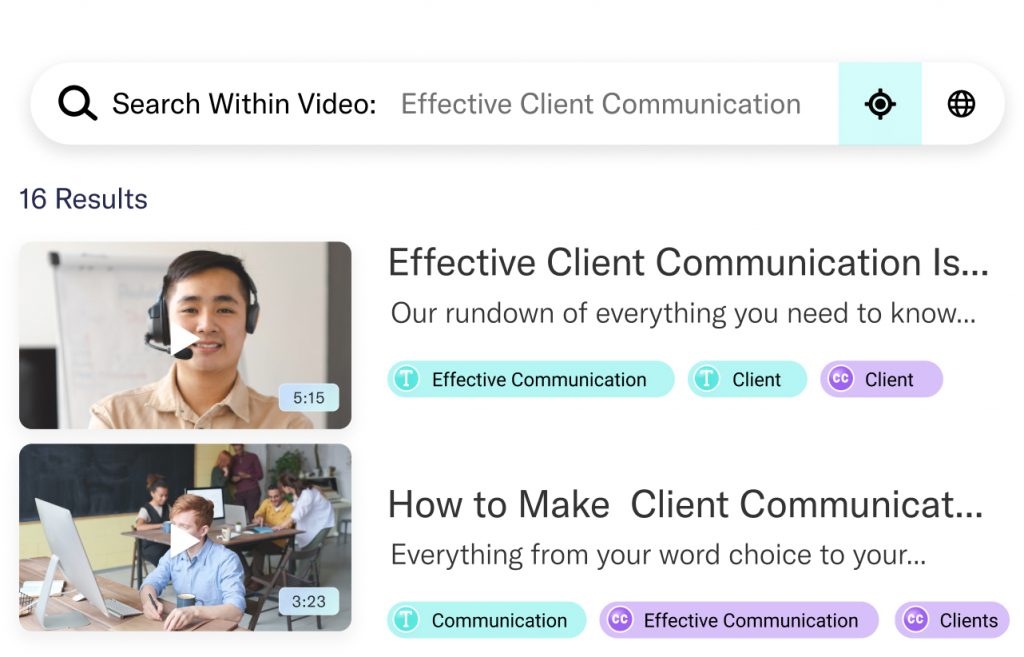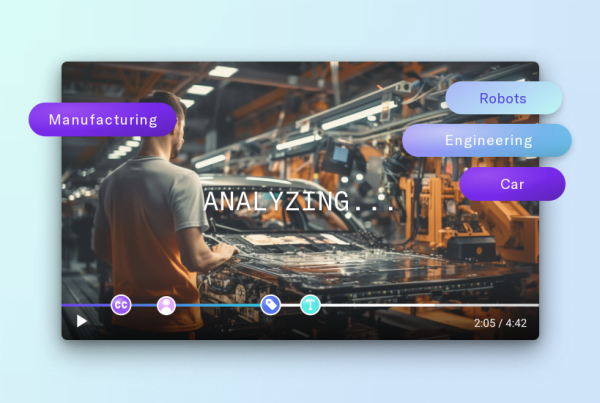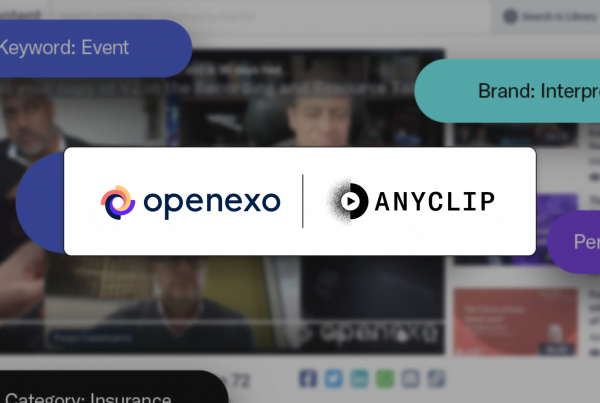Unlock the Potential
of Smart Video in
Your Organization
Top 5 Breakthrough Strategies for Superior Video Asset Management

Discover the power of AI in transforming video asset management within the corporate sphere. As businesses adapt to remote and hybrid work environments, efficient video asset management becomes essential. This guide details five innovative AI strategies that will enhance your company’s video asset management and improve communication and operational efficiency.
Strategy 1: Implementing Smart Video Archiving
Key to superior video asset management is the implementation of smart archiving solutions. In an era where content is abundant, managing, retrieving, and sharing video assets with ease is crucial for business operations. AI-driven video asset management systems enable organizations to automatically categorize, index, and store video content, ensuring a seamless retrieval process and optimal knowledge management.
 Enhancing Discoverability with Metadata
Enhancing Discoverability with Metadata
In the realm of video asset management, metadata plays a critical role. By embedding detailed metadata such as keywords, titles, and summaries, you transform raw video files into a neatly organized, searchable video asset library. This methodical approach to video asset management not only streamlines the archiving process but also significantly improves discoverability, leading to enhanced productivity and information retrieval efficiency.
Strategy 2: Real-Time Video Analytics for Strategic Insights
Adopting real-time video analytics is a significant advancement in managing video assets. Modern AI tools offer instant insights into video asset performance and viewer engagement patterns, enabling companies to make informed decisions that optimize their video content strategies.
Video Analytics in Action
Video analytics can track engagement during training sessions, allowing for real-time adjustments to maintain audience interest. This responsive approach in video asset management can be crucial in tailoring content to organizational needs effectively.
Strategy 3: AI-Powered Content Moderation for Quality Assurance
Incorporating AI-powered content moderation is key for maintaining high standards within your video assets. This strategy ensures that all video content aligns with company policies and quality benchmarks, a critical component of video asset management.
Best Video Asset Management Practices: Strategy 4: Interactive Video Assets
Interactive video assets represent a quantum leap in engaging audiences. AI customizes interactive elements based on viewer behavior, dramatically boosting engagement and personalizing the video experience. These advancements foster an interactive environment, facilitating better learning and viewer participation.
Strategy 5: On-Demand Video Assets for Flexible Learning Environments
Integrating on-demand video assets into employee training is a testament to the evolution of video asset management solutions. AI-powered platforms offer personalized content recommendations, adapting the learning experience to meet the unique needs of each team member.
Assessing the Impact of AI on Video Asset Management Systems
Adopting AI strategies can have a profound impact on how organizations manage their video content. These technologies enhance clarity, engagement, and retention of information, propelling a unified and collaborative company culture.
Case Study: Increasing Engagement with AI Video
A notable case study from a Fortune 500 company illustrates the profound effect of AI video strategies on employee engagement. After incorporating AI-powered video analytics and interactive content, the company witnessed a 40% increase in employee participation in their training programs.
Measuring Success: KPIs for AI Video Initiatives
Success in AI video initiatives can be measured through well-defined KPIs such as viewer engagement rates, content accessibility improvements, and the speed of information dissemination. By tracking these indicators, organizations can continuously refine their video strategies for optimal performance.
Further Reading and Resources
For those who wish to delve deeper into the role of AI in video asset management, additional resources and expert analyses are available. These resources provide in-depth perspectives on the evolving landscape of enterprise video communication.
External Links:
- Wainhouse Research on Video Engagement – For comprehensive industry analysis and statistics.
- AI in Corporate Communication – For insights into the broader impact of AI on corporate communication.
Internal Links:
- Our Video Technology Solutions – Discover our cutting-edge video solutions that harness the power of AI.
- Partners Success Stories – Read about our clients who have successfully implemented AI video strategies.





